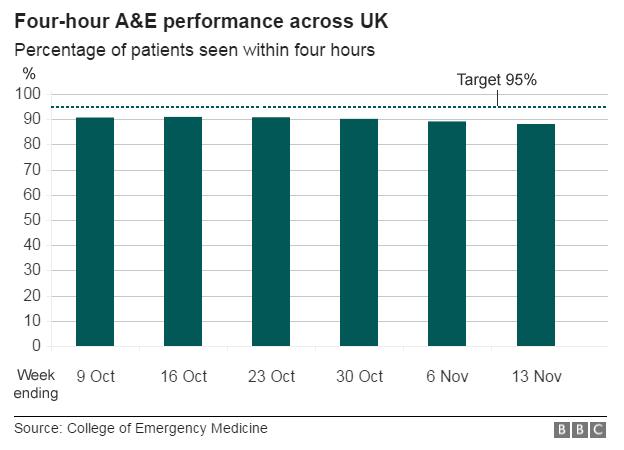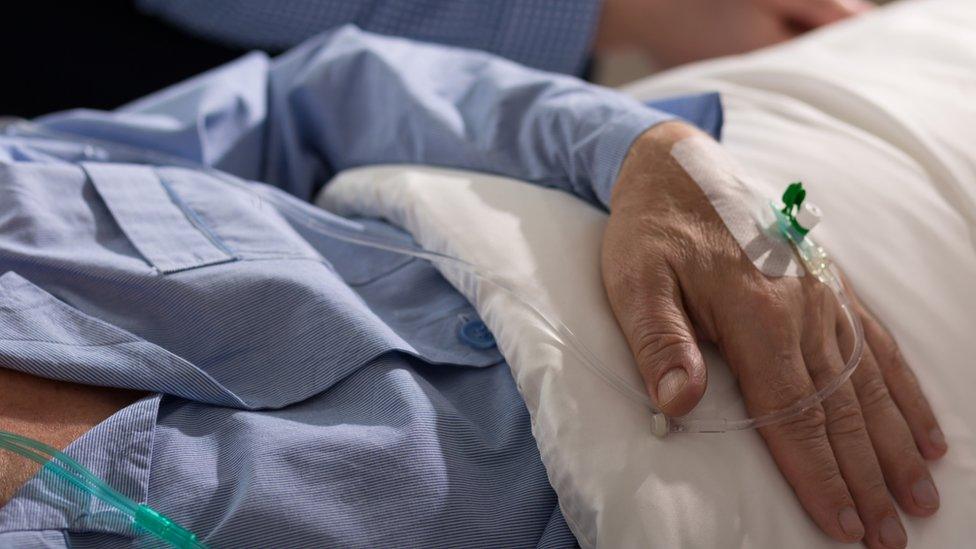A&E waiting times 'getting worse'
- Published

Waiting times in A&E departments across the UK are worsening as pressures grow in hospitals, figures suggest.
The data, collected by the Royal College of Emergency Medicine, showed 88% of A&E patients were treated or admitted within four hours - below the 95% target.
The figures are based on evidence submitted by more than 40 trusts - one in five of the total in the UK.
Hospitals also reported significant problems discharging patients.
In some places, a fifth of hospital beds are occupied by patients who are ready to leave hospital but cannot be discharged because of a lack of community services available to care for them.
'Worst to come'
The problems have developed despite three-quarters of hospitals increasing their stock of beds to try to relieve the pressure, and a growing number of routine operations being cancelled.
College president Dr Cliff Mann predicted the "worst is yet to come".
"The majority of hospitals have endeavoured to increase the number of beds available to cope.
"Despite this, elective operations have had to be cancelled and postponed as bed capacity is insufficient to cope."
He also said the problems with delayed discharges - which have caused a number of hospitals to declare major incidents - showed no signs of diminishing.

The college has been collecting the data for the past seven weeks to monitor the pressures on hospitals during winter.
It shows a gradual worsening in performance since hospitals started submitting the data at the start of October.
Then, just over 92% of patients were seen in four hours, compared with 88% in the week ending 13 November.
If that performance is replicated across the NHS - and the college says the data should reflect the national picture - it means hospitals are in the worst shape heading into winter for a generation.
Weekly data on the four-hour target in England has been provided by NHS England and the government in recent years, but they have now stopped that.

Instead, it is published monthly, but with a six-week time lag.
That means the latest official data is from September. It showed the four-hour target was being missed along with other targets covering ambulance response times, cancer care and diagnostics tests.
Scotland, which has tended to have the best performance on the four-hour target recently, is the only part of the UK that now publishes on a weekly basis.
'Joined-up care'
Data up to mid-November showed that 94.4% of patients were seen in four hours.
A spokeswoman for NHS England, which oversees more than three-quarters of the hospitals in the UK, said the key to dealing with the strain on the system was to create more joined-up care between the NHS and council-run social care - something that has been made a priority across the UK.
"It's important patients who are well enough to leave hospital can do so at the earliest opportunity and are helped to recover with dignity and compassion," the spokeswoman added.
- Published27 November 2015

- Published25 November 2015

- Published12 November 2015

- Published12 November 2015
- Published9 October 2015

- Published9 October 2015